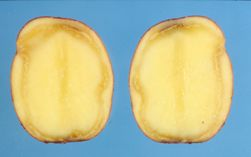EPPO-Q-bank Bacteria database
Detailed protocols for the DNA isolation and barcoding, including PCR amplification and sequencing, are included in the menu of this website under ‘Methodologies’. A ‘Molecular Decision Scheme’ showing the workflow for the identification of specific quarantine species, subspecies and pathovars has been included in the Q-bank Bacteria database and will be systematically updated by the curators based on available research results. This information aims to support an accurate identification of quarantine plant pathogenic bacteria by plant protection organizations, inspection bodies and private Laboratories.


Relevant information at the strain level is also given by linking the public collection strain number to each of the three well-established public bacterial collections in Europe: BCCM/LMG (http://bccm.belspo.be/catalogues/lmg-catalogue-search), CFBP (https://cirm-cfbp.fr/page/CFBP_query) and NCPPB (https://ncppb.fera.co.uk/ncppbsearch.cfm). Bacterial strains from these public bacterial collections that are used in the Q-bank Bacteria database can be ordered through the links provided above.
The EPPO Global Database (https://gd.eppo.int/) provides relevant information on these phytobacteria such as their geographical distribution, host plant, symptomatology and detection protocols.
General statement on nomenclature used in EPPO-Q-bank (Disclaimer)
Bacterial nomenclature is based on the Approved Lists of Bacterial Names (Skerman et al., Int. J. Syst. Bacteriology 30: 225-420, 1980) and the International Standards for naming pathovars (Dye et al., Rev. of Plant Pathol. 59: 153-168, 1980). Although the EPPO-Q-Bank database follows the last nomenclatural changes as they have been published in the International Journal of Systematic and Evolutionary Microbiology, a few nomenclatural inconsistencies are currently present, mainly regarding the Clavibacter michiganensis species.




